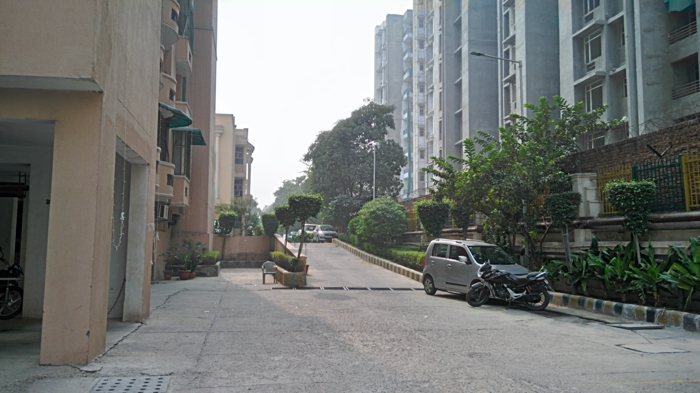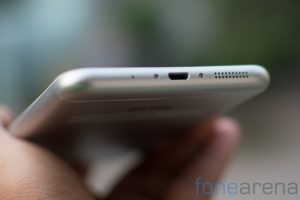
Once again it is time for yet another Asus Zenfone. The number of variants that the Taiwanese giant pushes out is perhaps second only to Samsung. For the most part, the company has focussed on meaningful differentiation with the Laser and Max series targeted towards bringing elements from the Zenfone 3 to the mass market but with a sharp focus on the camera and battery capabilities respectively. We’ve already reviewed the Zenfone 3 and the Zenfone 3 Laser, today let’s take a look at the Zenfone 3 Max.
Design
If you’ve seen one phone from the Asus Zenfone 3 line up, you have a pretty good idea of how all the others will look. You can argue that the homogeneity in design works well in the consumer’s favor. Indeed, the fact that you get a ‘premium’ design akin to the company flagship in a lower tier handset is certainly great. The Zenfone 3 Max however eschews the gorgeous glass and spun metal rear finish of the Zenfone 3.

The front fascia of the phone is nigh identical to the Zenfone 3 Laser save for the paint scheme. Where the laser had an all gold finish, the Max has a white front. While it is covered in protective Gorilla Glass, we found it to be exceptionally prone to scratches and you’ll want to be really careful with the hardware. Up above the screen is where you’ll find the usual array including the proximity sensor, 5MP front facing camera. Below the screen are three capacitive keys that correspond to back, home and menu. Unfortunately these are not backlit. Once again, like the Zenfone 3 Laser, you’ll observe that there’s a subtle 2.5D curve to the front glass that runs around the edge of the screen and merges rather sharply with the rear panel of the phone. The bezels on either of the screen are rather insignificant but quite substantial both above and below the screen.
On the right hand side of the phone is the volume rocker as well as the power button below it. Both the inputs offer great tactile feedback and were very responsive. In fact this is one feature that we usually like about Asus phones, they’re well built devices with good ergonomics and feedback. The left side includes the hybrid SIM slot while top and the bottom have the 3.5mm audio jack and the microUSB port respectively.

The back of the phone is plain with some minimal Asus branding towards the bottom. The dual LED flash, camera and laser autofocus unit sit on the same plane with a very symmetric design. Above and along the bottom edge you’ll notice two antenna bands that fit in well with the design and of course, improve radio performance on the phone. A fingerprint scanner also sits here and proved to be both fast and accurate when placed against the competition. Through software, Asus has made the fingerprint scanner particularly useful. You can use a series of taps to activate functionality like answering calls, launching the camera and taking photos.

The Zenfone 3 Max measures 151.4 x 76.24 x 8.3mm and weighs about 175grams making it a pretty lightweight handset despite the large display. The phone continues to be pocketable though we wouldn’t mind smaller bezels along the top and bottom. Overall though, the phone is ergonomically sound and unless you have an instant dislike for larger devices, you’ll find that it sits very well in your hand.
Software
Like several generations of Asus devices, our concerns with the software mostly center around the tremendous amount of bloat on the phone. Running Zen UI 3.0 based on Android 6.0.1, the phone is a cornucopia of colors and hues and has an approachable albeit a bit juvenile take on Android skins.
The interface paradigm is fairly standard, just the way we prefer it. The lock screen allows for customizable shortcuts in addition to the camera launcher, clock. You can obviously view notifications here.
Like we’ve talked about earlier, the home screen is very customizable and let’s you change theme packs and more. Unlike many Chinese competitors, the phone does not get rid of the app drawer which is certainly welcome. Within the app launcher, we like the capabilities on offer including the automatic sorting of installed apps.
As for the pre-installed applications, there’s close to 26 of these and includes everything from weather, movie maker, photo collage apps and more. Now we’re not saying that these are bad apps, far from that. We’re a bit surprised by how robust these apps tend to be but preinstalling these takes up precious space. Additionally, it isn’t always possible to delete these and the best you can do is to disable them.
For what it’s worth, there’s a few nifty additions like the Audio Wizard that can tweak system audio based on the scenario that you are in. A laser ruler app makes use of the laser autofocus module to act as a rangefinder though the accuracy is a bit suspect. More importantly, the software is quite well optimized, offers some interesting additions but the heavy handed pre bundling on the hardware is something we could have gone without.
Performance
The phone is powered by a 1.4Ghz Snapdragon 430 processor paired with an Adreno 505 GPU. In addition there’s 4GB of RAM which is more than sufficient for multitasking on a device of this calibre. Performance is as you’d expect and general tasks sail through smoothly. Zen UI continues to delight with its level of refinement and how well it pairs with the hardware on hand to offer a super slick and smooth experience. Stress the hardware though and things are a bit different. With a Snapdragon 430 processor, graphic heavy use is really not the phone’s forte. High end games result in a bit of frame drop. The phone also heats up in such use case scenarios. This is a phone that is more optimized for communications and general use than for someone who craves performance and you should temper your expectations accordingly. We’ve included a few comparative benchmarks below that place the Zenfone 3 Max against the competition.

The Zenfone 3 Max scores 43577 points in the AnTuTu benchmark.

In the Geekbench 3 Multi Core benchmark, the phone scores 2001 points.

In Geekbench 3, the Asus Zenfone 3 Max scored last where it practically tied with the similarly specced Zenfone 3 Laser.
Display
The display on the Zenfone 3 is a Full HD IPS panel. Stretched across to 5.5 inches, it delivers a pixel density of 401 ppi. The resolution is perfectly at home on a panel of that size and as such, icons and graphic elements look tack sharp. The contrast ratio here is a bit tame and makes colors look a bit muted so you shouldn’t really expect the vibrant and slightly over-saturated colors you see on AMOLED panels.

Brightness levels top off at 400 nits which while the highest around is absolutely sufficient to allow for great sunlight visibility. Viewing angles on the phone are good with a very mild color shift when viewing it from extreme angles.All in all, the display is about par for the course and delivers the goods.
Camera
The camera module on the Zenfone 3 Max has a 1/3” sensor with a resolution of 16 megapixels. An f/2.0 aperture lens is placed in front of this. As we mentioned earlier, a Dual LED flash and laser autofocus module are placed on either side of the camera. The front camera has a resolution of 8 megapixels and has an f/2.2 lens. The camera software in particular is very robust.

The camera app on the Zenfone 3 Max offers the full range of software options that are available on the company’s high end Zenfone 3. This includes a manual mode that allows you to adjust exposure, ISO and more. Unfortunately despite all those options, the camera is pretty average to say the least.
In broad day light, the camera on the Zenfone 3 Max performed about as you’d expect. Images are sharp and mostly noise free though zooming in close reveals a lot of noise reduction artifacts. We liked that the camera managed to focus very well even when very close to the subject. On many occasions the camera had issues with getting the white balance right at first shot. This is particularly visible in the first two shots of the gallery above. The camera also had a tendency to underexpose at times. When it worked though, the camera was quite decent and we feel that Asus will be able to fix these issues with a future software update.
Connectivity & Battery Life
The Zenfone 3 Max is equipped with the same connectivity options as all the other Zenfone devices and there’s not much to set it aside. There’s no infrared port so you won’t be able to use the phone for controlling appliances. You do get 4G LTE support as well as WiFi 802.11 b/g/n, Bluetooth 4.1 and GPS. There is 32GB of storage and you can expand that via a microSD card. Owing to the Hybrid SIM slot, you can either use both SIM cards or a single SIM and microSD.
Coming to the pièce de résistance ie the battery life. Compared to the previous generation Zenfone Max, there has been a drop in battery capacity. The 4100 mAh battery on offer though is still absolutely enormous and pairing it with the more frugal processor, you should still get phenomenal battery life. Realistically, with multiple email accounts and social profiles as well as shooting a fair bit of photo samples, we were still able to get two days of use out of the phone. This is right in line with Xiaomi’s Redmi series of phones and understandably so given the similar spec sheet.
Conclusion
The Zenfone 3 Max is quite a decent smartphone and this is something that can be said for the entire Zenfone range. It however lacks a differentiating factor. In fact even within it’s own product lineup, Asus would find it hard to set the Max aside given that phones like the Zenfone 3 Laser too have really good battery life.

If amazing battery life is a key criteria you should probably take a look at the Zenfone 3 Max. That said, it faces very still competition from the likes of the Xiaomi Redmi Note 3 and Redmi Prime which offer similar specs, performance and battery life for a lower price point.
Pros
- Ergonomics
- Battery Life
Cons
- Camera
- Average Specifications
- Bloat





















